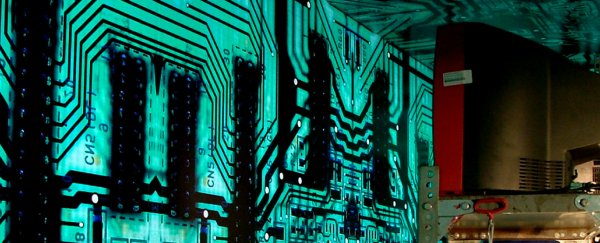For the first time ever, a computer has outperformed humans in the verbal reasoning portion of an IQ test.
The machine was programmed by researchers in China using a technique known as deep learning, which involves converting data into a set of algorithms that a computer can make sense of.
Until now, computers have been pretty successful at beating humans in two out of the three parts of a standard intelligence quotient test, or IQ test - the mathematical questions and the logic question - but they'd struggled to master the verbal reasoning portion, which looks at things like analogies and classifications. You know, those questions that ask you to find the word that doesn't fit in with the others, or "Which of these words is the opposite of ubiquitous?"
This is where the deep learning comes in. In the past, the furthest programmers had gotten was to build machines that were capable of analysing millions of millions of texts to figure out which words are often associated with each other, essentially turning words into vectors that could be compared, added and subtracted.
"But this approach has a well-known shortcoming: it assumes that each word has a single meaning represented by a single vector. Not only is that often not the case, verbal tests tend to focus on words with more than one meaning as a way of making questions harder," writes MIT Technology Review about the research.
The researchers, from the University of Science and Technology of China and Microsoft Research in Beijing, tried a different tack - they looked at words and the words that often appeared nearby in big bodies of text. Using an algorithm, they worked out how the words are clustered, and they then looked up the different definitions of each word in a dictionary. This allowed them to match each cluster to a meaning.
As MIT Technology Review explains:
"This can be done automatically because the dictionary definition includes sample sentences in which the word is used in each different way. So by calculating the vector representation of these sentences and comparing them to the vector representation in each cluster, it is possible to match them."
This means that the machine is able to recognise the different meanings of words for the first time.
The team helped the computers out further by feeding them multiple examples of questions so that they were able to recognise the question type and match it to the appropriate answering strategy.
They then tested the computer against 200 human participants of various ages and educational backgrounds.
"To our surprise, the average performance of human beings is a little lower than that of our proposed method," the team writes in arXiv.org, where the results were published. "Our model can reach the competitive performance between [participants] with the bachelor degrees and those with the master degrees."
This is a big step forward for artificial intelligence, and shows just how powerful deep learning can be. The strategy has also been used to teach computers how to beat us at 49 old-school Atari games, recognise food calories from a photo and even cook by watching YouTube videos.
"With appropriate uses of the deep learning technologies, we could be a further step closer to the true human intelligence," the authors write.
